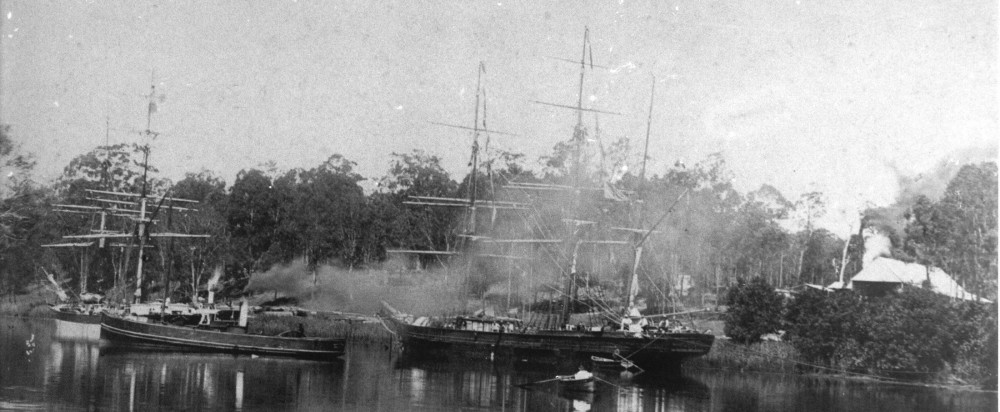James and Ellen Carlton
Arrived in Australia in 1841 from Enniskillen. Both Catholics, he was a farm labourer aged 20 and she a dairymaid aged 19, and heavily pregnant. James worked briefly for John Eales at Nelsons Plains and then for Henry Hooke at Dungog. After living on the Hookes’ property Wirragulla for about four years, the family moved to their own property on the Williams River about 13 miles from Dungog, which they called Pine Brush – a leasehold of 97 acres on Church and School land. Living first in a timber home, a more substantial house was built known as ‘The Stone House’, which remained until 1963. James Carlton worked as a tanner in Brookfield for a time, buying small parcels of land which he then divided between his sons.
Charlie
A Gringai man ordered by his elders to carry out a punishment according to Gringai law resulting in the deaths of five convict shepherds (see Mackenzie’s shepherds). Arrested and tried for murder under British law, sentenced to death and hanged in September 1835. The only man hanged at Dungog town.
Conway Patrick
A constable for many years in the 1830s and 1840s at Dungog and later Bailiff of the Dungog Court.
Combo
A Gringai man who worked for the Hooke family on occasion and drowned in the Williams River while taking a message for some Europeans.
Thomas Cook
Thomas Cook was Dungog’s first Police Magistrate, arriving in 1834 as the Police Magistrate of the two newly created Police Districts of Dungog and Port Stephens. Cook was embroiled in a number of incidents and controversies in his career, managing at times to get off side with both Catholics and Protestants. When his position as Police Magistrate was abolished he remained on the Dungog bench as a JP. Cook lived just outside Dungog village on a property called Auchenletorie until sometime in the 1850s when he moved to Woolahra in Sydney where he died in 1865.
To read more on the life of Thomas Cook JP see
